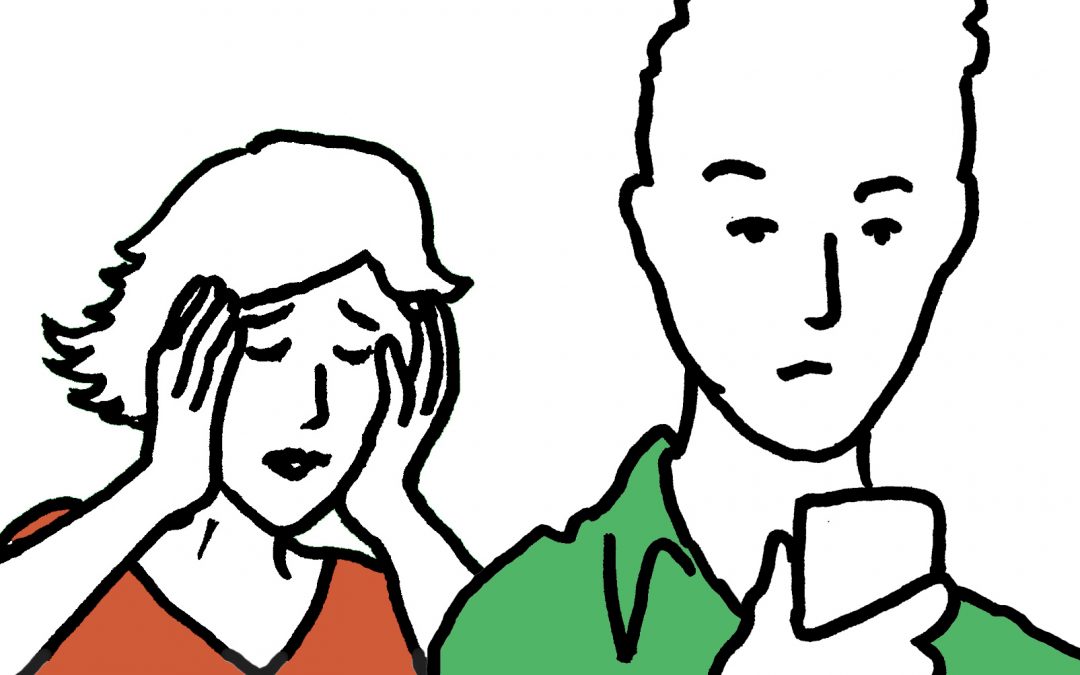When a sex addict’s behavior is revealed to their spouse, it’s typically a surprise. A traumatizing surprise. And yet, for too long, the classical addiction model inferred that these spouses, far from being unaware of their partners’ addictions, were “enabling” the problem with “codependent” behavior. This message was often the wrong one, placing more stress on relationships that were already devastated by profound breaches of trust.
How could this have happened?
Sex addiction has long been misunderstood. Furthermore, it’s been misunderstood in different ways, passing through different phases of misunderstanding on both the part of clinicians and public. The first phase of this could be described as total skepticism, where sex addiction simply wasn’t viewed as a valid phenomenon. How could you be addicted to sex? Can’t you just snap out of it? Clearly not—but it took some time for the culture to come to a more empathetic and accurate perspective.
From there, we entered into the second phase of misunderstanding: the false belief that sex addiction is exactly like every other addiction. While it’s not totally different—it does share commonalities with other addictions—it also has particular distinguishing characteristics that require attention. Sex addiction is different than other addictions, in that sex addicts use the most intimate act—the place where pair bonding can begin—to isolate themselves from intimacy. Clinicians can’t simply copy and paste addiction treatment frameworks from other disorders. If the fine distinctions are ignored, the quality of treatment suffers.
That’s where these notions of “enabling” and “codependency” come in. They originate in substance abuse treatment, where they often make a lot of sense. Often, codependent spouses will inadvertently shelter addicted partners from recovery—they’ll forgive, adapt to, compensate for, and otherwise enable the addictive behavior. This absolutely isn’t intentional, but it’s natural. We want to help our loved ones, and it’s hard to know what helps when it comes to addiction. Psychological education is required to end the enabling behavior, since enabling behaviors are so intuitive.
However, sex addiction looks very different. Spouses can often identify that there’s something off with their addicted partners. But it’s usually less visible, for example, alcoholism. Alcoholics often display signs like slurred speech and tremulation, but in sex addiction, the behavior can be well hidden.
This doesn’t mean that enabling and codependent behaviors are always absent from a relationship with a sex addict. People in otherwise healthy-seeming relationships can be too scared to acknowledge intimacy issues. Signs of suspicious behavior can be ignored by spouses who’d prefer to imagine that their partners are perfect.
But, regardless, enabling behavior is usually far less prevalent than would be predicted by traditional addiction frameworks. Spouses are usually mostly or completely in the dark. And when the light comes on—when their partners’ behavior is uncovered—it shakes them to the core. It’s a deep sexual rejection on the part of a trusted partner. It’s a revelation of behavior that often provokes disgust. It’s a total breach of trust. Often, their whole sense of reality is disturbed. How could I have picked this person? How can I trust people at all, given that I was so far off in my judgements? Why didn’t I know? This is trauma, plain and simple.
It results in a lot of the effects we know well from cases of PTSD. The presence of triggers is primary among them. Triggers pop up everywhere in the spouses’ life. For example, seeing their partner in an attractive outfit could provoke spiraling suspicions about what would motivate them to maintain a desirable self-presentation. Sometimes intimacy itself becomes a trigger. And these triggers come with a myriad of other symptoms, like insomnia, flashbacks, and social isolation.
Thankfully, though it’s long overdue, clinicians who treat sex addiction are catching up to this. Today we talk more about “betrayal trauma” than “enabling” or “codependency”. This is the kind of trauma experienced, generally, by those betrayed by caregivers and trusted figures—the trauma of deep bonds being broken.
Treating this kind of trauma isn’t simple, much less when the originator of the trauma is still in a relationship with the traumatized person. But there is a way forward, which involves different therapeutic modalities. Patients and spouses engage in relationship restoration processes that focus on rebuilding trust. EMDR and experiential therapy is used as a trauma-specific treatments. Other modalities include stress reduction exercises such as meditation, mindfulness, and yoga.

